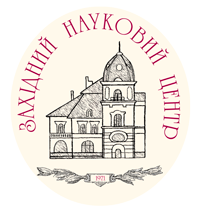V. DUTKA1, G. MIDYANA2, E. PAL’CHIKOVA3, Yu. DUTKA1
1Ivan Franko National University of Lviv, Kyryla & Mefodiya Str., 6, 79005 Lviv, Ukraine 2Physical-Chemistry of Combustible Minerals Department of Lytvynenko Institute of Physical-Organic Chemistry and Coal Chemistry National Academy of Science of Ukraine, Lviv, Ukraine 3Institute of Geology and Geochemistry of Fossil Fuels, National Academy of Science of Ukraine, Lviv, Ukraine
DOI: https://doi.org/10.37827/ntsh.chem.2018.53.145
SOLVENT EFFECT ON THE RATE OF THERMAL DECOMPOSITION OF ALIPHATIC PEROXY ACIDS
The thermal decomposition of aliphatic peroxy acids in various organic solvents was studied. It shown that the primary homolytic dissociation of the peroxide group accompanied by secondary reactions of chain-inducted decomposition. The reaction medium affects the rate of both the primary homolytic dissociation and secondary induced decomposition processes. Correlation equations between the rate constants of the reactions in study and the physicochemical parameters of the solvents were proposed. The correlation equation for effective thermolysis rate constants and the basic physicochemical parameters of solvents at 383 K has the form: k = –70.312 + (0.3230 ± 0.0343)B + (0.7648 ± 0.0786)VM. N = 12; R = 0.9606; S = ±7.3762; F = 0.4880. The basicity, and molar volume of solvent have effect of thermolysis process. The influence of polarization, polarizability and Hilderbrand's function on the thermal decay process is negligible. Correlation equations for effective rate constants for other temperatures are similar. The proposed correlation equations relate the parameters of the transition state of the thermolysis process and the physic-chemical parameters of solvents.
Key words: thermolysis, peroxyacids, solvent effects, correlations equations, activation energy
References:
-
1. Antonovskii V.I., Khursan S.I. Physical Chemistry of Organic Peroxides. Moscow: Akademkniga 2003. – 391 p.
(in Russian).
2. Antonovskii V.I. Organic Peroxide Initiators Moscow, Chimijya 1972. – 448 p. (in Russian).
3. Rachimov A.I. Chemistry and technology organic peroxyde compound – Мoskow: Khimija, 1979. – P. 392. (in
Russian).
4. Parker W.E., Riccuti C, Ogg C.L., Swern D. Peroxides II. Preparation, characterization and polarographic
behavior of long-chain aliphatic peracids. J. Am. Chem. Soc. 1955. Vol. 77. N 15. P. 4037–4041. (https://doi.org/10.1021/ja01620a023).
5. Parker W.E., Wtinauer L.P., Swern D. Peroxides IV. Aliphatic diperacids. J. Am. Chem. Soc. 1957. Vol.79. N
8. P. 1929–1931.(https://doi.org/10.1021/ja01565a043).
6. Weisberger A, Proskauer E.S., Riddick J.A. and Toops E.E. Jr. Organic Solvents. Physical Properties and
methods of Purifications, New York: Intersci., 1955, 2nd ed. 520 p. (in Russian).
7. Gordon F.J., Ford R.F. The chemist”s Companion, New York: Wiley 1972, -541 p. (in Russian).
8. Makitra R.G., Turovski A.A, Zaikov E.E. Correlation Analisis in Chemistry of Solution – Utrecht-Boston.: VSP.
– 2003. (https://doi.org/10.1201/b12185)
9. Makitra R.G., Pirig Ja.N., Krivelyuk R. Makitra R.G. Available from VINITI – Мoscow 1986, No 628–В86 ( in
Russian).
10. Dutka V.S., Midyana G.G., Dutka Yu.V., Pal”chikova E.Ya. Solvent effects on the rate of thermolysis of
lauroil peroxide. Russian Journal of General Chemistry. – 2015. – Vol. 85(12). P. 2703 – 2709. (https://doi.org/10.1134/S1070363215120063).
11. Midyana G.G., Makitra R.G., Pal”chikova E.Ya. Solvent effects on the rate of thermolysis of peroxyde
compounds. Russian Journal of Organic Chemistry. – 2004. – Vol. 40, N. 10. – P.1459–1463. (https://doi.org/10.1007/s111789-005-0032-2).
12. Dutka V.S., Midyana G.G., Dutka Yu.V., Pal”chikova E.Ya. Influence of solvents on the rate of thermal
decomposition of peroxydecanoic acid. Russian Journal of General Chemistry. – 2018 – Vol. 88, N2 - P. 188 –
194. (https://doi.org/10.1134/S1070363218020020).
How to Cite
Dutka V., Midyana G., Pal’chikova E., Dutka Yu. SOLVENT EFFECT ON THE RATE OF THERMAL DECOMPOSITION OF ALIPHATIC PEROXY ACIDS Proc. Shevchenko Sci. Soc. Chem. Sci. 2018 Vol. LIII. P. 145-154.
Download the pdf
